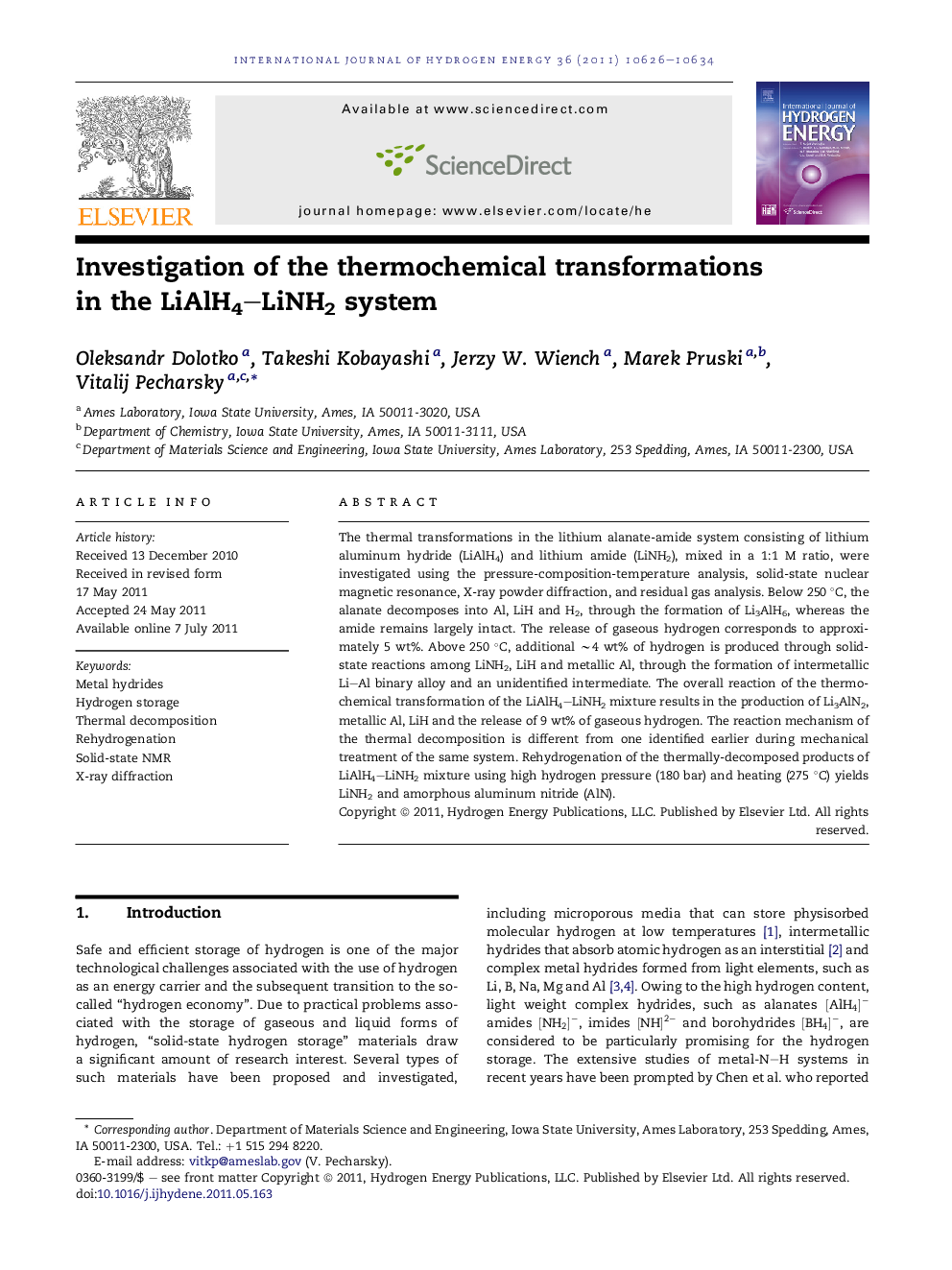| Article ID | Journal | Published Year | Pages | File Type |
|---|---|---|---|---|
| 1277530 | International Journal of Hydrogen Energy | 2011 | 9 Pages |
The thermal transformations in the lithium alanate-amide system consisting of lithium aluminum hydride (LiAlH4) and lithium amide (LiNH2), mixed in a 1:1 M ratio, were investigated using the pressure-composition-temperature analysis, solid-state nuclear magnetic resonance, X-ray powder diffraction, and residual gas analysis. Below 250 °C, the alanate decomposes into Al, LiH and H2, through the formation of Li3AlH6, whereas the amide remains largely intact. The release of gaseous hydrogen corresponds to approximately 5 wt%. Above 250 °C, additional ∼4 wt% of hydrogen is produced through solid-state reactions among LiNH2, LiH and metallic Al, through the formation of intermetallic Li–Al binary alloy and an unidentified intermediate. The overall reaction of the thermochemical transformation of the LiAlH4–LiNH2 mixture results in the production of Li3AlN2, metallic Al, LiH and the release of 9 wt% of gaseous hydrogen. The reaction mechanism of the thermal decomposition is different from one identified earlier during mechanical treatment of the same system. Rehydrogenation of the thermally-decomposed products of LiAlH4–LiNH2 mixture using high hydrogen pressure (180 bar) and heating (275 °C) yields LiNH2 and amorphous aluminum nitride (AlN).
► Thermal and mechanical energy induce different transformations in LiAlH4–LiNH2 system. ► Mechanochemical decomposition leads to AlN, LiH and 6.6 wt.% of hydrogen. ► Temperature induced decomposition leads to Li3AlN2, Al, LiH and 9 wt% of hydrogen. ► Rehydrogenation of thermally-decomposed products at 180 bar H2 yields LiNH2 and AlN.
